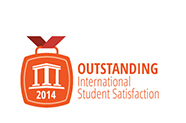Regulatory and quality compliance; the baseline of sustainable and efficient business functions by Ms. Angeliki Katsapi – Vice Chair of Temos International Assessors board
Globalization and internationalization of trade transactions have raised the need for standardization as well as for regulatory control, in various economic sectors.
Over the last decades, progress of technology and specialization advancements have caused difficulties in the determination of effective ways to controlling safety and quality in the production processes, while supporting sustainability in business. Furthermore, awareness and information for the end consumer has been booming, both, in the products’ and services’ sectors. The production chains of tangible and intangible goods are becoming increasingly complicated and need to involve various interested parties and stakeholders in an attempt to satisfy corporate efficiency along with customers’ needs and expectations.
Primacy of International Standardization
Standardization is one of the major European Union functions that, by specifying the production conditions or outcomes, play a significant role in the creation of the EU Unified Market. Relative policies of the European Commission aim to align the nationally applicable standards of the EU countries, with the international standards being developed by the International Organization for Standardization (ISO). This process is called ‘’primacy of international standardization’, and it ensures that through the operation of the authorized standardization European bodies, CEN, CENELEC and ETSI, European standards are based on International framework (COM(2011)-311).
Local or international specialized organizations such as the American Society of Mechanical Engineers (ASME) also develop standards and regulatory codes. They, thereby, provide a wide range of guidelines and principles to ensure compliance of the products to safety standards as well as to design specifications and security characteristics. Inspection and certification of compliance are two functions, which contribute to the overall control of the standards’ application as well as to the alliance of international standards provisions and the implemented working practices.
Depending on the country’s legislation and the risks deriving from the product or service provision, accreditation and compliance control may be either obligatory or voluntary for the provider. In the later model, entities, which are otherwise already regulated by the government, pursue accreditation as a seal of recognition and excellence, and, additionally as a competitive advantage or marketing tool to penetrate local or international markets. In fact, standards, support business competition and may ensure the interoperability of complementary products and services among different countries or, even, continents.
Accreditation for the verification of outcomes as well as certification of compliance, are services, provided by third- parties, highly specialized and independent institutions with competent surveyors; these institutions are ruled by impartiality, independency and transparency principles in order to ensure reputable and objective results in their auditing and assessment activities.
Standards in a High-Risk Sector – The Case of Healthcare
Healthcare is, by example, one of the high-risk sectors where standards, guidelines and controlling activities are essential to safeguard patients’ safety amidst scientific innovations and current challenges that need to be effectively handled. Starting by the Joint Commission inside and outside the US, international accreditation bodies such as Temos (German), Accreditation Canada (Canadian), CHKS (British), ACHS (Australian), and others, authorized by IsQua- IEEA (International Society for Healthcare –External Evaluation Association), have become a basis of reference, for payers and buyers of healthcare services, aiming to ensure transparency and outcomes in the sector.
Studies in Australia and the USA demonstrate a positive association between accredited facilities and several indicators of quality such as adherence to guidelines and protocols (Braithwaite et al, 2010; Schmaltz, 2011). Infection control performance is also positively associated with accredited facilities (Sekimoto et al, 2008; Mumford et al, 2015). There is another dimension that has to be taken into account. Qualitative care is primarily related to safe care whereas, safety, has an enormous impact on the health economics given that according to official data, over 12% of national health expenditure is consumed by managing the harm of unsafe care (The Economics Of Patient Safety, From analysis to action, OECD, October 2020).
Control of Processes and Responsiveness in Crisis Times
Safe clinical outcomes are increasingly connected to efficiency according to value- based approaches. On the other hand, internal control of processes is strongly contributing to responsiveness in crisis times, as it is currently proven in the pandemic of Covid-19, worldwide. A systematic review using data up to 31 March 2020 estimated that 44% of covid-19 cases were nosocomial, – acquired in hospital by patients who were admitted for other reasons. This, practically, means that even medical facilities when there is lack of screening protocols and standardized control of the personnel, are not able to prevent infections transmission.
Based on the market need for appropriate guidance on the essential measures to prevent spread of Covid-19, Temos International Accreditation Organisation, announced the Certification Program ‘Covid-19 Safe’ providing a set of evidence- based standards, by a constructive method for operational adjustments and, must-do trainings for the personnel. Major topics of this compliance program include patients and staff screening procedures, monitoring of hygiene and disinfection based on the risk level of the facility and services, isolation protocols for infected patients, control and adjustment of the infrastructure (e.g. air flow control), social distancing policies, crisis communication plans and use of telemedicine services with the aim to reducing crowding. Throughout this program, interventions are realized by the healthcare provider and, at a second stage, certified healthcare assessors conduct the control of the achieved compliance and give feedback for additional protective actions to be taken.
Likewise, accredited hospitals in the frame of general accreditation programs are forced to follow clear protocols, emergency plans and roadmaps in order to effectively respond to acute, forceable circumstances and these are few of the points, which are examined and evaluated in the frame of accreditation surveys. One of the basic components of accreditation preparation is training and engagement of the staff in all-essential procedures conforming to the applied standards and guidelines. At the same time, implementation is monitored through internal controls and Key Performance Indicators are measured to provide hard evidence on the deficits and to reveal potential for improvement. Once the accredited organisations face actual challenges, they demonstrate higher achievement at shorter timeframes as it was recently published by Salma Jaouni Araj, (HCACF, May 29, 2020 ‘’Accreditation: How it supported healthcare organizations’ readiness for COVID-19’’).
***
In conclusion, there is a growing global concern and demand for quality and efficiency improvement systems through effective mechanisms such as accreditation, certification of compliance, and technology assessment. Systematic compliance management efforts in Healthcare, may achieve diligent management, effective risks mitigation, excellence in clinical outcomes, and, finally, ‘win the bet’ of a sustainable and successful service in the long-term run.
References
Braithwaite J, Greenfield D, Westbrook J, Pawsey M, Westbrook M, Gibberd R, Naylor J, Nathan S, Robinson M, Runciman B, Jackson M, Travaglia J, Johnston B, Ten D, McDonald H, Low L, Redman S, Johnson B, Corbett A, Hennessy D, Clark J, Lancaster J. (2010). Health service accreditation as a predictor of clinical and organisational performance: a blinded, random, stratified study. Quality and Safety in Health Care. 19:14-21.
Mumford V, Reeve R, Greenfield D, Forde K, Westbrook J and Braithwaite J. (2015). Is accreditation linked to hospital infection rates? A 4-year, data linkage study of Staphylococcus aureus rates and accreditation scores in 77 Australian acute hospitals. International Journal for Quality in Health Care. 27 (6): 479–485.
Schmaltz SP, Williams SC, Chassin MR, Loeb JM and Wachter RM. (2011). Hospital performance trends on national quality measures and the association with Joint Commission accreditation. Journal of Hospital Medicine. 6(8):454-61.
Sekimoto M, Imanaka Y, Kobayashi H, Okubo T, Kizu J, Kobuse H, Mihara H, Tsuji N, Yamaguchi A. (2008). Impact of hospital accreditation on infection control programs in teaching hospitals in Japan. American Journal of Infection Control. 36:212–19















